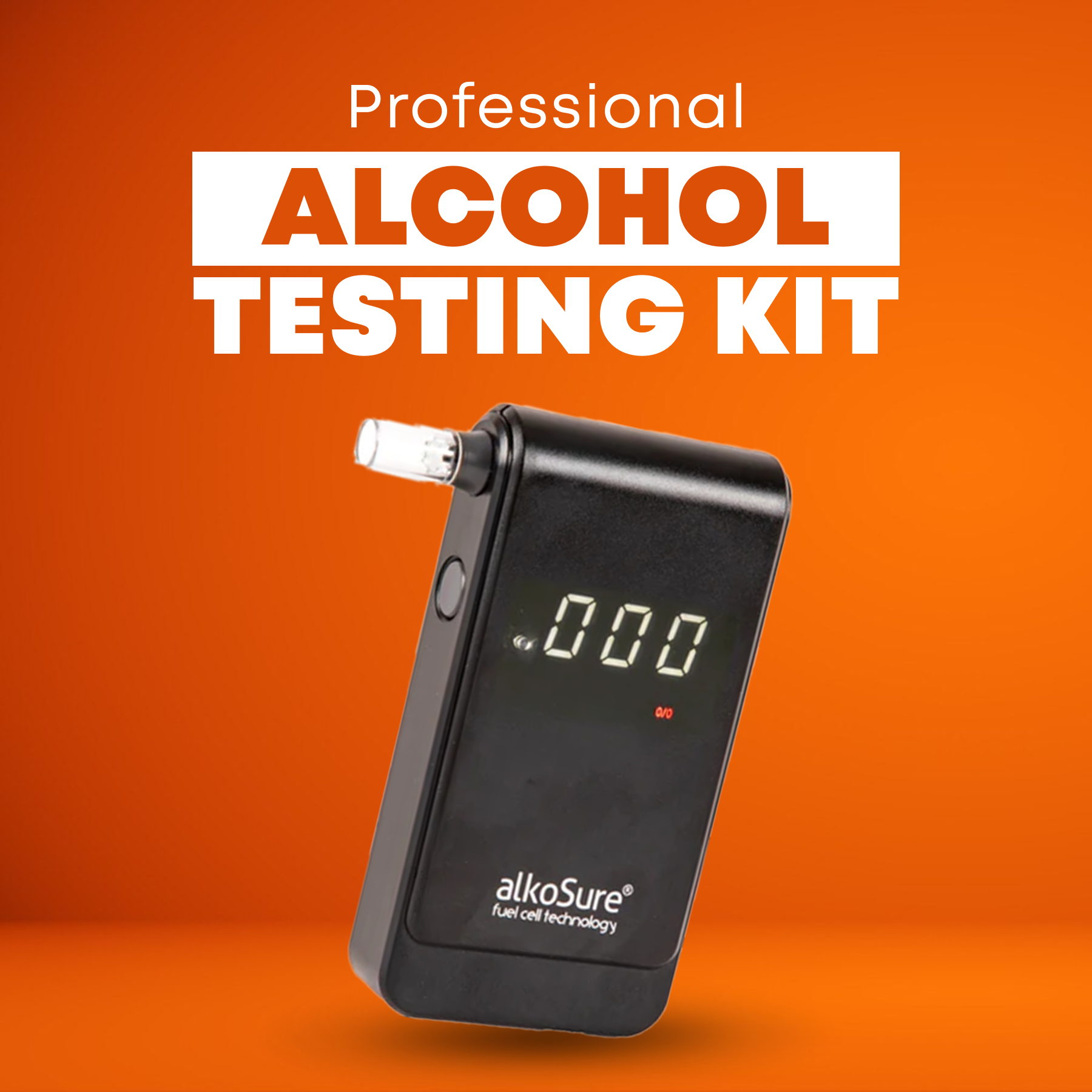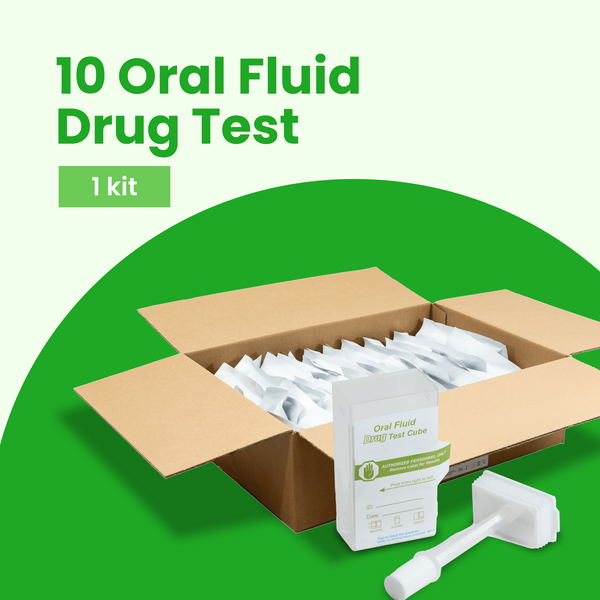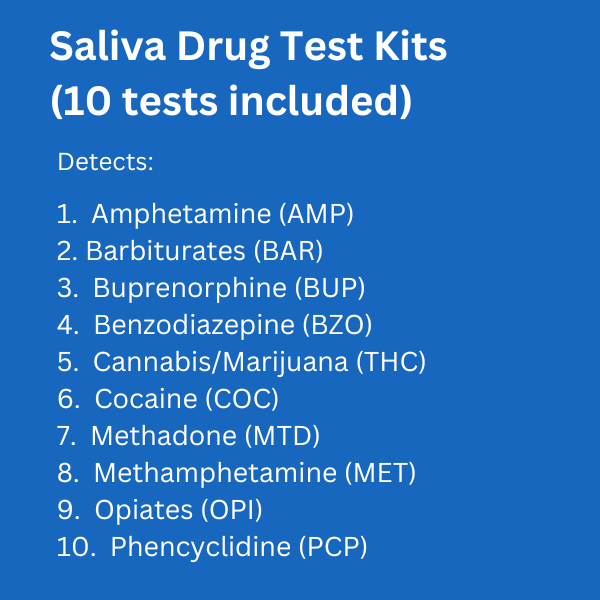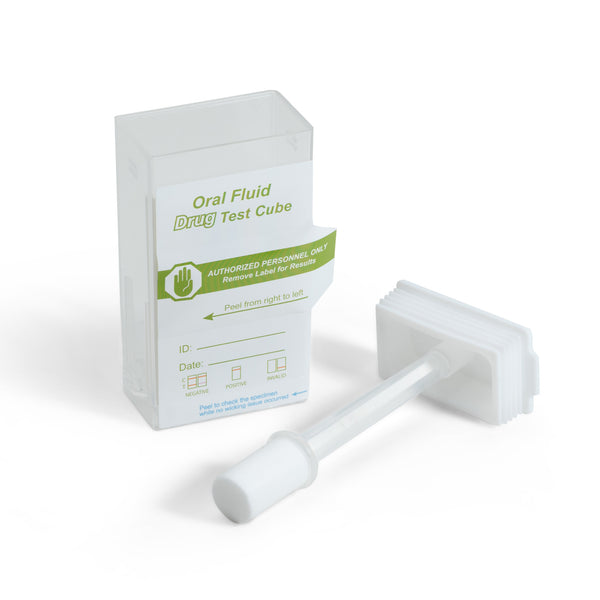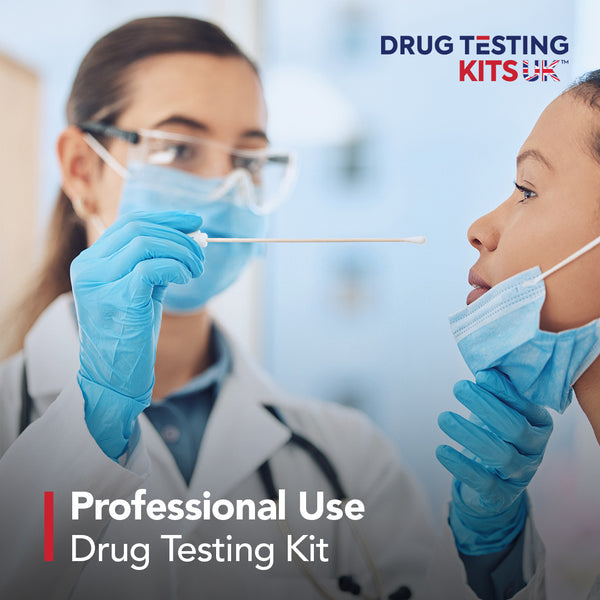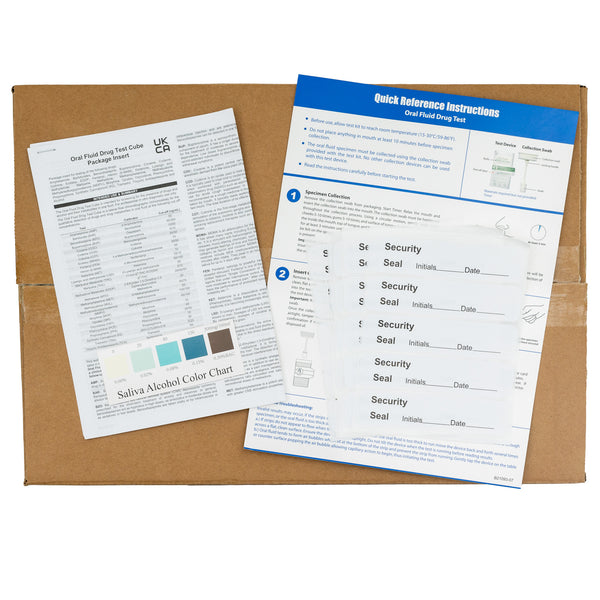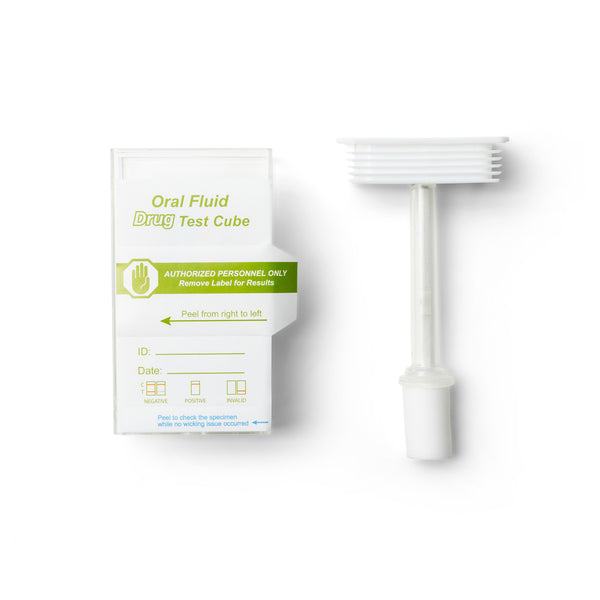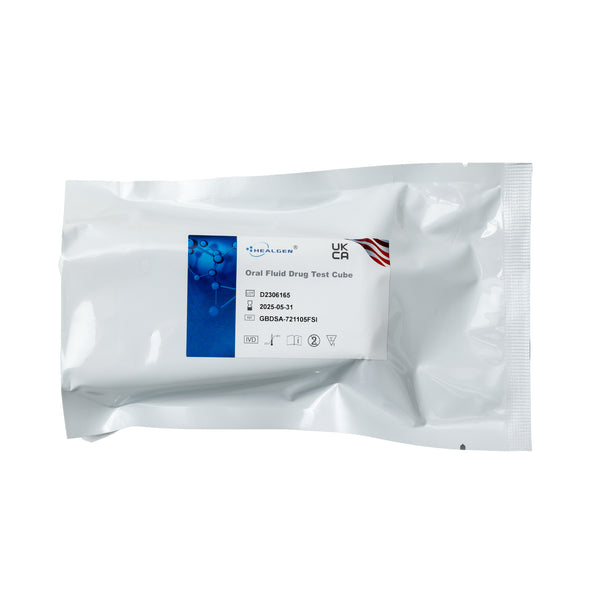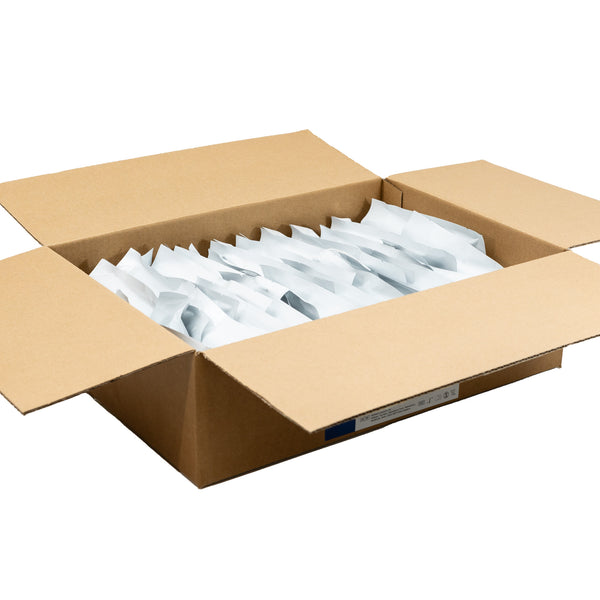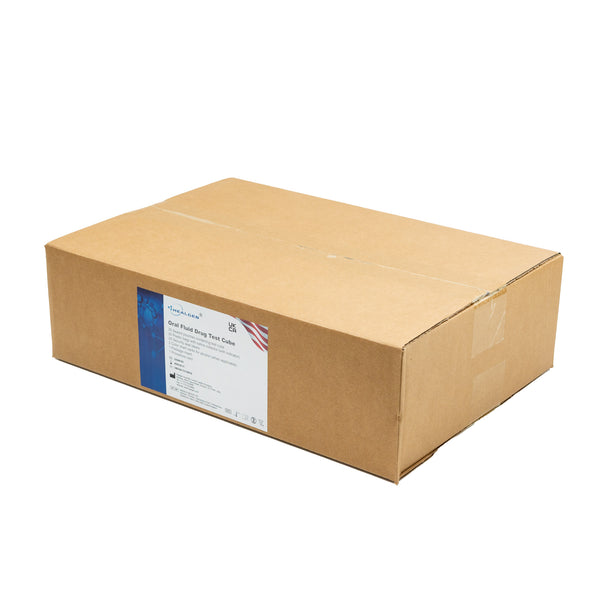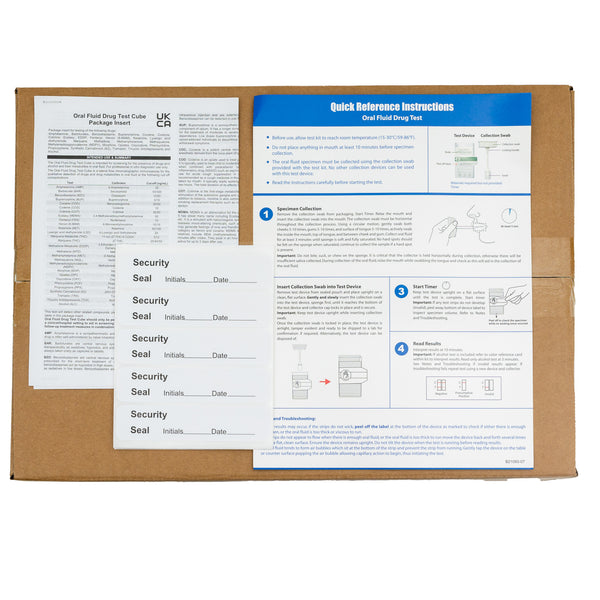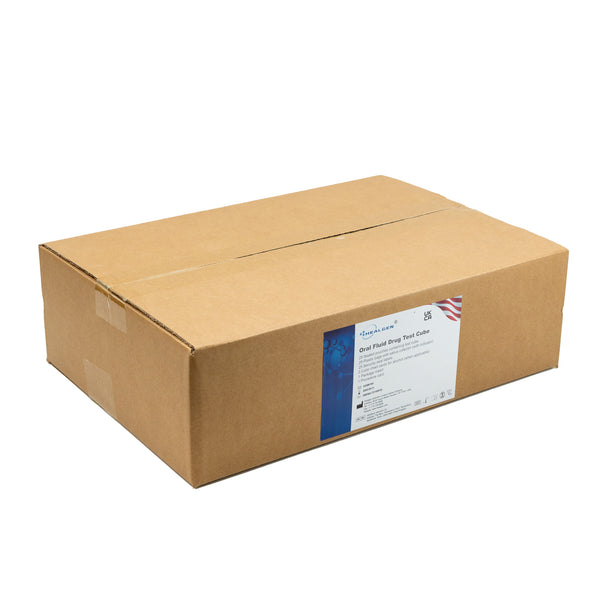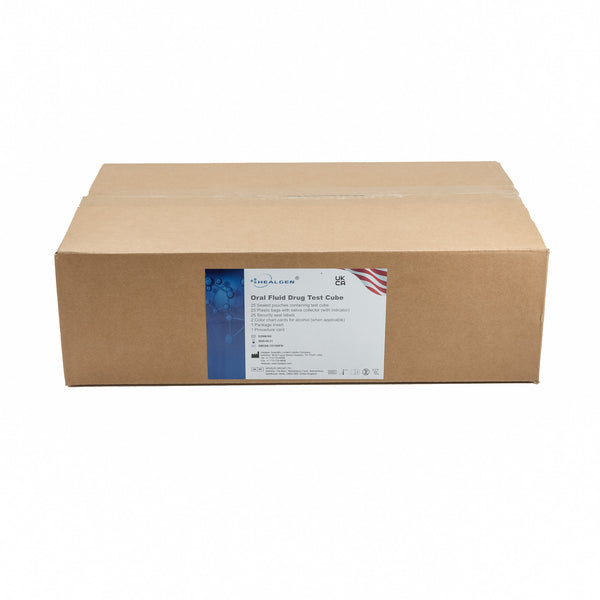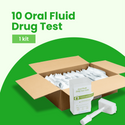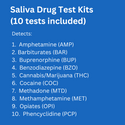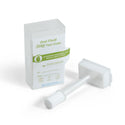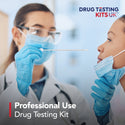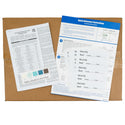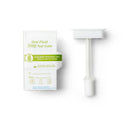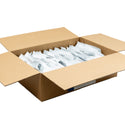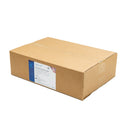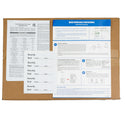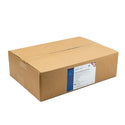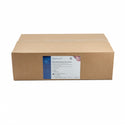Why you can trust Drug Testing Kits UK for advice on choosing the right drug testing products. Our team of UK drug and alcohol safety experts meticulously analyzes current regulations and scientific data while incorporating feedback from real-world users of our products. Additionally, we consult with healthcare and industry professionals to ensure that our recommendations are practical and valuable. This reliable information can guide your decision-making process when selecting drug and alcohol testing kits suitable for your needs.
When it comes to breathalyzer tests, most people assume they only detect alcohol consumption. However, these devices can sometimes register positive readings even when you haven't been drinking. Understanding what causes false positives is crucial, especially if you're subject to workplace testing or need to drive.
This guide explores the everyday items and situations that might trigger unexpected breathalyzer results – and how you can avoid these potentially serious misunderstandings.
How Breathalyzers Actually Work

Before diving into what can cause false readings, it helps to understand how these devices detect alcohol in the first place.
Most breathalyzers work by measuring compounds in your breath using one of three technologies:
-
Semiconductor sensors detect changes in electrical current when alcohol molecules are present (common in personal breathalyzers)
-
Fuel cell technology creates an electrochemical reaction with alcohol (used in police and professional devices)
-
Infrared spectroscopy measures how alcohol molecules absorb infrared light (found in advanced testing equipment)
The critical limitation is that these devices aren't always detecting ethanol (drinking alcohol) specifically. Instead, they react to chemical compounds with similar structures – which is where the problems begin.
Common Non-Alcoholic Substances That Can Trigger Positive Results
1. Mouthwash & Breath Sprays

Many oral hygiene products contain significant amounts of alcohol – sometimes up to 27% in products like Listerine Original. This alcohol doesn't enter your bloodstream in meaningful amounts, but it can linger in your mouth.
Real-world example: Using mouthwash just before a breathalyzer test could register a reading equivalent to having consumed alcoholic drinks, potentially as high as 0.20% BAC.
Prevention tip: Wait at least 15-20 minutes after using mouthwash before taking a breath test, or switch to alcohol-free varieties.
2. Fermented Foods & Baked Goods
Fermentation produces small amounts of alcohol, which can be present in:
-
Kombucha
-
Sauerkraut
-
Sourdough bread
-
Ripe fruit
-
Some vinegars
Real-world example: A freshly-eaten slice of sourdough bread can potentially register a reading of 0.02% BAC for a short period.
Prevention tip: Avoid fermented foods for at least an hour before anticipated testing.
3. Cough Syrups & Medications

Many liquid medications contain alcohol as a solvent, with concentrations ranging from 2.5% to 25%. Common culprits include:
-
NyQuil (25% alcohol)
-
Some prescription cough medicines
-
Certain liquid cold remedies
-
Liquid pain relievers
Real-world example: Taking a standard dose of NyQuil could potentially trigger a positive reading for 30-60 minutes after consumption.
Prevention tip: Check medication labels for alcohol content and opt for pill forms when possible.
4. Energy Drinks & Expired Beverages

While most energy drinks don't contain alcohol, some beverages can develop alcohol content through natural fermentation, especially if:
-
They're past their expiration date
-
They contain natural sugars
-
They've been improperly stored
Real-world example: An opened fruit juice left unrefrigerated for days can develop enough natural alcohol to trigger a low-level positive reading.
Prevention tip: Check expiration dates and proper storage requirements for beverages.
5. Hand Sanitizers & Cleaning Products

The pandemic made hand sanitizers ubiquitous, but most contain 60-95% ethanol or isopropyl alcohol. When used frequently:
-
Alcohol vapors can be inhaled
-
Residue on hands can be transferred to the mouth
-
Fumes can affect nearby breath tests
Real-world example: Using alcohol-based hand sanitizer immediately before a test can create enough vapor to register on sensitive breathalyzers.
Prevention tip: Use sanitizer at least 5 minutes before testing and avoid touching your face or mouth afterward.
Environmental or Situational Factors That Can Affect Readings
6. Ketosis or Diabetes
The body naturally produces acetone when:
-
Following a ketogenic (very low-carb) diet
-
Fasting for extended periods
-
In diabetics with uncontrolled blood sugar
Acetone has a chemical structure similar enough to alcohol that it can trigger false positives on some breathalyzers.
Real-world example: People on strict keto diets have reported BAC readings of 0.01-0.03% despite complete sobriety.
Prevention tip: If you have diabetes or follow a keto diet, consider carrying medical documentation.
7. Cigarette Smoke and Vaping
While tobacco itself doesn't contain alcohol, smoking or vaping immediately before a breath test can:
-
Introduce interfering compounds
-
Create mouth conditions that affect readings
-
Potentially damage sensitive breathalyzer sensors
Real-world example: Chain smoking just before testing has been shown to elevate readings slightly on some devices.
Prevention tip: Wait at least 5 minutes after smoking before taking a breath test.
8. Environmental Chemicals and Fumes
Certain workplace or household environments contain compounds that can trigger false positives:
-
Paint thinners and solvents
-
Gasoline fumes
-
Industrial cleaning products
-
Lacquers and varnishes
Real-world example: Auto mechanics or painters working with solvents have reported positive readings despite not drinking.
Prevention tip: Move to fresh air for at least 15 minutes before testing if you've been exposed to strong chemicals.
9 Factors That Impact Breathalyzer Accuracy
While false positives from external substances are a significant concern, several technical and physiological factors can also affect breathalyzer readings. Understanding these variables is crucial for anyone using or being tested with these devices.
1. Device Calibration Status
Breathalyzers require regular calibration to maintain accuracy—much like how a scale needs occasional adjustment to show correct weights.
How it affects readings: An uncalibrated device might show readings that are consistently too high or too low. In extreme cases, the variance can be as much as 0.04% BAC—enough to incorrectly indicate legal intoxication.
Real-world impact: Police-grade breathalyzers typically require calibration every 6-12 months or after 1,000 uses. Personal breathalyzers often need more frequent calibration, sometimes as often as monthly for heavy use.
What to know: Most quality breathalyzers will indicate when calibration is needed. At Drug Testing Kits UK, we offer calibration services and replacement of sensors when necessary to maintain accuracy.
2. Temperature and Humidity

Breathalyzers are designed to operate within specific environmental parameters, typically between 10-40°C with humidity levels below 95%.
How it affects readings: Extreme cold can cause falsely low readings as sensors become less responsive. High humidity can interfere with the electrical components and sensor function.
Real-world impact: A breathalyzer used outdoors in winter might underreport BAC by 10-15%, while one used in a steamy bathroom after a shower might give erratic results.
What to know: Allow your device to acclimate to the testing environment for 15-20 minutes before use, and avoid testing in extreme conditions whenever possible.
3. User Breathing Pattern
The way a person breathes into a breathalyzer significantly impacts the reading's accuracy.
How it affects readings: Deep lung (alveolar) air provides the most accurate measurement of blood alcohol content. Shallow breaths primarily sample mouth and throat air, which may not reflect true BAC.
Real-world impact: A person who provides a shallow breath sample might register 0.02-0.03% lower than their actual BAC, potentially helping them "pass" a test they should fail.
What to know: Proper testing requires a deep breath followed by steady, continuous exhalation for at least 5-6 seconds. Most professional devices won't provide a reading until sufficient deep lung air is sampled.
4. Device Quality and Technology

Not all breathalyzers are created equal—there's a substantial difference between professional-grade and budget consumer devices.
How it affects readings: Professional fuel cell breathalyzers typically have an accuracy range of ±0.005% BAC, while basic semiconductor models might vary by ±0.02% or more.
Real-world impact: A budget breathalyzer might indicate you're safe to drive when you're actually over the limit, or conversely, might falsely suggest impairment.
What to know: Professional-grade fuel cell breathalyzers cost more but provide significantly more reliable results. For workplace testing or serious personal use, the investment in quality equipment is essential.
5. Recent Burping or Hiccupping
Digestive processes can bring alcohol from the stomach back into the mouth and throat.
How it affects readings: Burping or hiccupping shortly before testing can release concentrated alcohol vapors from the stomach, dramatically inflating breathalyzer readings.
Real-world impact: A single burp before testing could potentially double a BAC reading, turning a legal 0.04% into an apparently illegal 0.08% or higher.
What to know: Professional testing protocols require a 15-20 minute observation period before testing to ensure no burping, hiccupping, or vomiting has occurred. During this time, the subject shouldn't consume anything.
6. Mouth Temperature
The temperature inside your mouth can significantly impact how alcohol evaporates during testing.
How it affects readings: Higher mouth temperatures increase the rate at which alcohol evaporates, potentially inflating readings. Lower temperatures can suppress readings.
Real-world impact: A person with a fever of 38.5°C might register a BAC reading 10-15% higher than their actual level. Similarly, having just consumed ice-cold drinks could temporarily lower readings.
What to know: Wait at least 15 minutes after consuming hot or cold food and beverages before testing. If you have a fever, be aware that readings might be artificially elevated.
7. Battery Level

Electronic breathalyzers rely on consistent power supply to function correctly.
How it affects readings: Low batteries can cause sensors to underperform, leading to inconsistent or artificially low readings.
Real-world impact: A device with batteries at 10% capacity might show a BAC of 0.06% when the actual level is 0.08%—a potentially dangerous discrepancy.
What to know: Most quality breathalyzers include battery level indicators. Replace or recharge batteries when they fall below 25% capacity, and always carry spare batteries for critical testing situations.
8. Operator Training and Technique
The person administering the test plays a crucial role in obtaining accurate results.
How it affects readings: Improper device handling, incorrect timing, or failure to observe pre-test protocols can all compromise accuracy.
Real-world impact: Studies have shown that improper testing technique can introduce errors of up to 23% in breathalyzer results.
What to know: For workplace testing, ensure administrators receive proper training. For personal use, carefully read and follow all instructions, particularly regarding waiting periods and breathing technique.
9. Interfering Radio Frequency (RF) Interference
Electronic devices emit radio frequencies that can potentially interfere with breathalyzer operation.
How it affects readings: Strong RF signals can disrupt the electronic components in breathalyzers, causing erratic readings or device malfunction.
Real-world impact: Testing near powerful radio transmitters, police radios, or even some medical equipment can compromise results.
What to know: Keep mobile phones at least 1 meter away during testing. For workplace or professional testing, conduct tests away from radio equipment, large electrical motors, or other sources of strong electromagnetic fields.
Understanding these factors helps explain why professional breathalyzer testing follows strict protocols. For the most accurate results with personal devices, mimic these professional standards as closely as possible: use quality equipment, maintain proper calibration, follow correct testing procedures, and be aware of environmental conditions that might affect your results.
Reducing the Chance of Wrong Readings
To minimize the risk of false positives:
-
Wait at least 15-20 minutes after eating, drinking anything, or using oral products
-
Rinse your mouth thoroughly with water before testing
-
Avoid smoking or vaping for at least 5 minutes before the test
-
Test in clean, open-air environments away from chemicals or fumes
-
Use reliable, properly calibrated breathalyzers from trusted suppliers
-
Document any medical conditions that might affect results
-
Follow proper testing protocols, including deep lung air samples
Why Choose Drug Testing Kits UK Breathalyzer Tests

At Drug Testing Kits UK, we understand the importance of accurate alcohol testing, whether for personal peace of mind or workplace compliance. Our breathalyzers are:
-
Professionally calibrated and tested to police-grade standards
-
Designed with fuel cell technology for superior accuracy
-
Supplied with clear, easy-to-follow instructions
-
Backed by our UK-based customer support team
-
Delivered discreetly and quickly nationwide
Our devices minimize the risk of false positives while providing reliable, consistent results you can trust.
👉 Shop Breathalyzers at Drug Testing Kits UK
Frequently Asked Questions
Can a breathalyzer detect other types of alcohol besides ethanol?
Yes, breathalyzers can detect other alcohols like methanol and isopropyl alcohol, which are found in products like windscreen wash and rubbing alcohol. However, these substances are not meant for consumption and are toxic.
Can toothpaste or chewing gum cause false readings?
Most toothpastes don't contain alcohol and won't cause false positives. However, some specialty mouthwashes disguised as toothpaste might. As for gum, alcohol-free varieties are safe, but some breath-freshening gums contain small amounts of alcohol that could temporarily affect results.
Is it possible to fail a breath test after eating bread?
Freshly baked bread, particularly sourdough, can contain trace amounts of alcohol from the fermentation process. While unlikely to cause significant readings, very sensitive breathalyzers might detect it briefly after consumption.
How soon after drinking mouthwash is it safe to test?
Wait at least 15-20 minutes after using alcohol-containing mouthwash before taking a breathalyzer test. This allows time for the residual mouth alcohol to dissipate.
Are over-the-counter medications a concern?
Yes, many liquid medications contain alcohol as a solvent. Always check labels and, when possible, choose pill forms of medications before anticipated testing.
Conclusion
Breathalyzers are valuable tools for promoting safety and accountability, but they're not infallible. Understanding what can trigger false positives helps you avoid potentially serious misunderstandings.
By being aware of common triggers like mouthwash, medications, and environmental factors—and following proper testing protocols—you can ensure more accurate results. When accuracy matters most, choose quality breathalyzers from trusted suppliers like Drug Testing Kits UK.



 03333 704 704
03333 704 704


